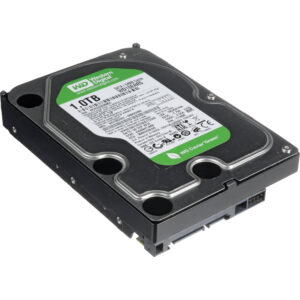SATA 1.0 and 2.0 differ in data transfer speed. On the first generation, the maximum throughput is 150 megabytes per second, on the second — 300 megabytes per second. This difference is due to the different clock frequency of the interface.
However, there are a few subtleties. The above velocities are «spherical and in vacuum». But in practice they can be a little lower. Let’s figure out how SATA 1.0 and SATA 2.0 differ, and how to choose compatible equipment.
Features of the operation of SATA and other computer equipment

Any digital interface — be it SATA, USB or even Wi-Fi — operates at a certain clock frequency. This parameter describes the rate at which data is transmitted over it.
That is, for example, SATA 1.0 operates at a frequency of 1.5 GHz. This means that 1.5 billion times per second, data is transmitted over this interface — “one” and “zero”. The speed of information exchange depends on the clock frequency. The higher the clock frequency, the more data per second can be transmitted over the «cable».
The chipset is responsible for the clock frequency of peripheral interfaces — and, in particular, SATA. This device on the motherboard determines the relationship between the various elements of the computer — the processor, RAM, permanent memory, video card, and so on. And it is it that controls the data flows, as well as the frequency of their transmission.
And if the motherboard and the chipset installed on it firmly fixed the frequency of the data transfer interface to drives with permanent memory at a value of 1.5 GHz (which corresponds to the 1.0 standard), it will not be possible to increase it. Well, in any case, if you do not redo the entire circuitry of the device. And it’s so complicated and expensive that it’s easier to buy a new motherboard.
Does it make sense to install fast drives on a slow computer
All generations of SATA — I, II, III, Express — have the same connectors and are cross-compatible. That is, you can connect a “slow” drive to a “fast” motherboard — and vice versa. However, the data rate is always truncated on the lower of the two.
That is:
-
- If the motherboard has a 1.0 interface, and a 2.0 drive is connected to it, the data transfer rate will correspond to the 1.0 standard;
-
- If the computer has 2.0, and a disk with 1.0 is installed in it, the transfer speed will correspond to 1.0.
The only “but” is that some second-generation HDDs have a special chip that does not work adequately with SATA-I. But that’s okay! The same drives are equipped with a special jumper to ensure cross-compatibility, which switches the operating mode from SATA-II to the previous standard, so that support for both iterations is still achieved.
It is also worth noting that the read and write speed of modern hard drives — for example, Western Digital Blue or Green — exceeds the same 150 megabytes per second. And often even in random access mode. Therefore, it makes no sense to install high-speed drives (both modern hard drives and SSDs) in outdated computers. All the same, the actual speed is determined by other components on the motherboard.
Ideal upgrade option
Interface 1.0 was introduced back in 2003, and the first computers with its support came out at the same time. So at the time of writing this material, he is already 16 years old — and he can be called too outdated.
The second generation of technology was introduced a year later. It was developed by NVIDIA and implemented in the nForce 4 chipset. The first computers with Serial ATA 2.0 support were introduced at the end of 2004. So at the moment even it is considered obsolete.
Revision 3.0 was introduced in 2008. It provides a throughput of 600 megabytes per second, making it ideal for SSDs and high-speed hard drives.
And the latest generation at the moment — Express — does mean «moving» to the PCI Express bus. Thanks to this, the maximum throughput is 1.2 gigabytes per second, but there are very few compatible equipment.
Thus, if you plan to upgrade, now it is better to purchase a motherboard with SATA III support. Only in this case, the use of SSD drives will be most justified. And other external data stores will work faster.
An interesting feature of generation 1.0
The first generation of this interface has one very interesting feature — connected hard drives can be powered from the power supply via a Molex connector (a standard four-pin connector, which was used back in the days of IDE). This is necessary to ensure compatibility with legacy hardware.
However, you cannot connect 4-pin Molex power and 15-pin Serial ATA power to the HDD at the same time. This can lead to all sorts of damage, including more extensive than just hard drive burnout.
In subsequent revisions, Molex support was removed. Now it can only be found in some optical drives without Blu-Ray support, since they still have “so-so” performance and the developer company is unlikely to bother connecting the latest iterations of the interface.
To connect a hard drive with SATA to a power supply that does not have a corresponding connector, a special adapter with two Molex will help. Such adapters are sold in almost all stores of digital equipment and electronics.

Добавить комментарий
Для отправки комментария вам необходимо авторизоваться.